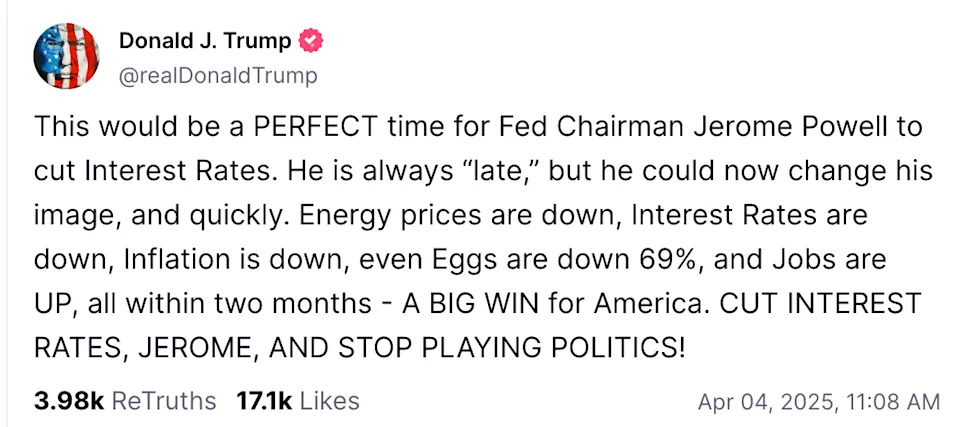Fed Chair Jay Powell explains why he's always wearing a purple tie: 'We are strictly nonpolitical'
It turns out there's a reason why Federal Reserve Chair Jerome Powell is always wearing a purple tie at his press conferences.
"At the beginning, the only significance was that I liked purple ties," Powell quipped during a moderated Q&A interview on Friday. "But I will say, for the next press conference, I reached for a blue tie or a red tie, and [went], 'Maybe not,' you know?"
Powell said the importance of Fed independence served as a key catalyst for his color selection.
Historically, red is a color most often associated with Republicans, while blue is associated with Democrats.
"We are strictly nonpolitical. I can't stress that enough," Powell said. "It's not that we're bipartisan. We are nonpolitical. We don't do that. And so purple was a good color for that, that's all. Plus, I like purple ties."

The timing of Powell's comments came as the Fed chair once again found himself on the other side of a prodding from the president to lower interest rates.
Just prior to Powell's speech, President Trump posted on Truth Social that now "would be the PERFECT time" for the central bank leader to cut rates.
“He is always ‘late,’ but he could now change his image, and quickly," Trump said. "Energy prices are down, Interest Rates are down, Inflation is down, even Eggs are down 69%, and Jobs are UP, all within two months - A BIG WIN for America. CUT INTEREST RATES, JEROME, AND STOP PLAYING POLITICS!”

Trump frequently criticized Powell during his first term in office but has been relatively more quiet this time around, with the focus firmly on rolling out an aggressive trade policy.
The president made headlines earlier on Friday by doubling down on his tariff stance in a separate Truth Social post:
"TO THE MANY INVESTORS COMING INTO THE UNITED STATES AND INVESTING MASSIVE AMOUNTS OF MONEY, MY POLICIES WILL NEVER CHANGE. THIS IS A GREAT TIME TO GET RICH, RICHER THAN EVER BEFORE!!!"
Heading into Wednesday's "Liberation Day," the massive scope and intensity of Trump 2.0 tariffs had been underestimated by investors , despite the consistent promises from Trump on the campaign trail.
In 2024, then-candidate Trump pledged to impose blanket tariffs of at least 10% on all trading partners, including a 60% tariff on Chinese imports.
That promise materialized Wednesday ( and then some ) when the president slapped reciprocal tariffs on countries around the world, the new levies ranging from a 10% "baseline" tariff to additional duties for nations the administration considers to be the "worst offenders."
All told, Trump announced tariffs that will impact some 185 countries, including the United States's largest trading partners, in a move that has sent markets reeling .
In prepared remarks delivered Friday, Powell gave few assurances to investors that the recent sell-off would prompt a quick response from the central bank.
"While tariffs are highly likely to generate at least a temporary rise in inflation, it is also possible that the effects could be more persistent," Powell said.
"Our obligation is to keep longer-term inflation expectations well anchored and to make certain that a one-time increase in the price level does not become an ongoing inflation problem."
Read more: What is inflation, and how does it affect you?
Alexandra Canal @allie_canal , LinkedIn,

